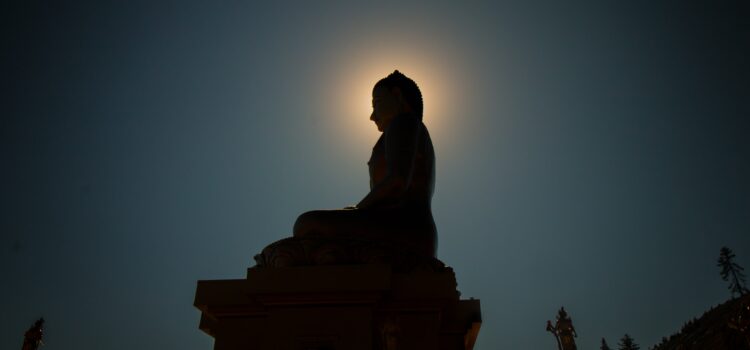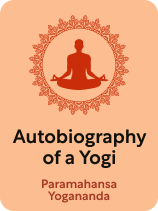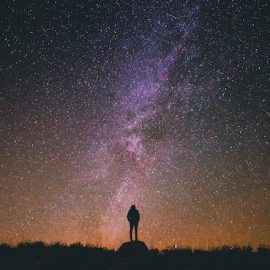

This article is an excerpt from the Shortform book guide to "Autobiography of a Yogi" by Paramahansa Yogananda. Shortform has the world's best summaries and analyses of books you should be reading.
Like this article? Sign up for a free trial here.
Who was Paramahansa Yogananda? Do you want to learn about the life of Yogananda during his early years?
Paramahansa Yogananda was a prominent yogi, guru, and author of the popular memoir, Autobiography of a Yogi. In his early life, Yogananda claimed to experience supernatural abilities and had a deep yearning for spiritual growth.
Read on to learn about the early life of Yogananda, according to his memoir Autobiography of a Yogi.
The Life of Yogananda: Birth and Early Childhood
In his memoir, Autobiography of a Yogi, Paramahansa Yogananda provides practical lessons about yoga, spirituality, and how to live a good life, interspersed with highlights and anecdotes from the author’s life. In this article, we’ll explore the life of Yogananda during his early years, including his birth and childhood, according to Autobiography of a Yogi.
In describing his early life, Yogananda notes that his birth was prophesied by a Bengali guru named Lahiri Mahasaya. The prophecy said that Yogananda would become a great yogi and undertake an important spiritual mission, though it didn’t specify what that mission would be.
(Shortform note: Much of what we know about Mahasaya today comes directly from Autobiography of a Yogi. However, some quotes attributed to the guru provide some more insight into his personality and beliefs. Mahasaya said that seeking God is the only worthwhile pursuit in life—but that the trappings and ceremonies of organized religion are unnecessary. He believed that meditation is all you need to worship God and that meditating on any problem will reveal the solution to it through that connection with God.)
The man who would become Paramahansa Yogananda later in life was originally named Mukunda Lal Ghosh. He was born on January 5, 1893, in the city of Gorakhpur, India.
Throughout his life, even as a young child, Yogananda had frequent spiritual experiences, such as prophetic dreams and visions. He also demonstrated supernatural abilities, such as causing other children’s kites to fly over to him simply by exerting his will upon them. Furthermore, Yogananda remembered his previous lives.
| Siddhis: Extraordinary Abilities As previously noted, abilities like those Yogananda describes here are called siddhis. The Sanskrit word siddhi means “success” or “perfection,” so called because they’re feats of understanding and controlling your body, mind, and the world around you. To give a few examples of siddhis, controlling your body can allow you to levitate or exhibit superhuman strength. Controlling your mind can enable you to remember your past lives (as Yogananda did) or foretell the future (in fact, prophecy will continue to play a large role in Yogananda’s life story). Controlling the world around you can allow you to manipulate air currents, move things without touching them (as Yogananda did with the kites), or cause objects to appear and disappear as if by magic.Though these powers seem supernatural, yogis claim that anyone can learn siddhis with enough training. Being born with such abilities—as Yogananda says he was—is rare, but not unheard of. |
Running Away From Home
Yogananda, eager to begin his spiritual training, frequently ran away from home. Each time, he planned to either look for a guru or to make a pilgrimage to the sacred Himalayan mountains.
(Shortform note: In Hinduism and Indian culture, Guru means someone who’s both a teacher and a spiritual guide in Hinduism. This word has entered the English language with a definition more like simply “teacher” or “expert,” but the religious connotations are crucial to its original meaning.)
However, no matter how many times he tried, he never made it far from home. Yogananda explains that he failed because it wasn’t the right time for him in his life—his destined teacher hadn’t appeared yet, so God and fate blocked him from beginning his spiritual journey.
(Shortform note: Destiny is a complex subject in Hinduism. Hindu scriptures teach that every living thing has a destiny (called dharma) that’s determined by karma and set by God. However, people also have free will, which can be misguided by the illusions of maya—they trick themselves into believing that they’re in control of their own destiny and thereby trap themselves in a delusion. You could think of your destiny as what you’re supposed to do, but fulfilling your destiny requires you to understand and submit to God’s will.)
The Prophecy and the Amulet
In addition to foretelling Yogananda’s birth, Mahasaya gave a second prophecy: Yogananda’s mother would receive an amulet, which she would pass to Yogananda after her death. Yogananda would then carry the amulet—and when the amulet disappeared, it would be time for Yogananda to meet his guru.
The prophecy came true. Yogananda’s mother left the amulet to him when she died. It was one of Yogananda’s most precious life possessions, and he kept it in a locked box, except for brief times when he wanted to look at it.
(Shortform note: Psychic powers and prophetic abilities are frequently attributed to yoga masters such as Lahiri Mahasaya. However, yogis don’t claim such abilities as their own—rather, Mahasaya would likely say that he was simply a conduit for the knowledge and will of God, and that was how he knew the future.)
However, one day, Yogananda opened the box to find that the amulet was gone. That same day, seemingly by chance, he met Sri Yukteswar Giri—a swami who would become his guru.
(Shortform note: Swami is a title of respect for a senior member of a Hindu monastic order. This word can also mean “religious teacher,” similar to guru. Sri is also an Indian title of respect, used when speaking about or to an important person. Unlike guru and swami, sri doesn’t necessarily suggest a religious leader—although in this case, Sri Yukteswar happened to also be a spiritual guide.)

———End of Preview———
Like what you just read? Read the rest of the world's best book summary and analysis of Paramahansa Yogananda's "Autobiography of a Yogi" at Shortform.
Here's what you'll find in our full Autobiography of a Yogi summary:
- The memoir of Paramahansa Yogananda, a famous yoga practitioner and teacher
- Practical lessons about yoga, spirituality, and how to live a good life
- An explanation of the Eightfold Path of Yoga






